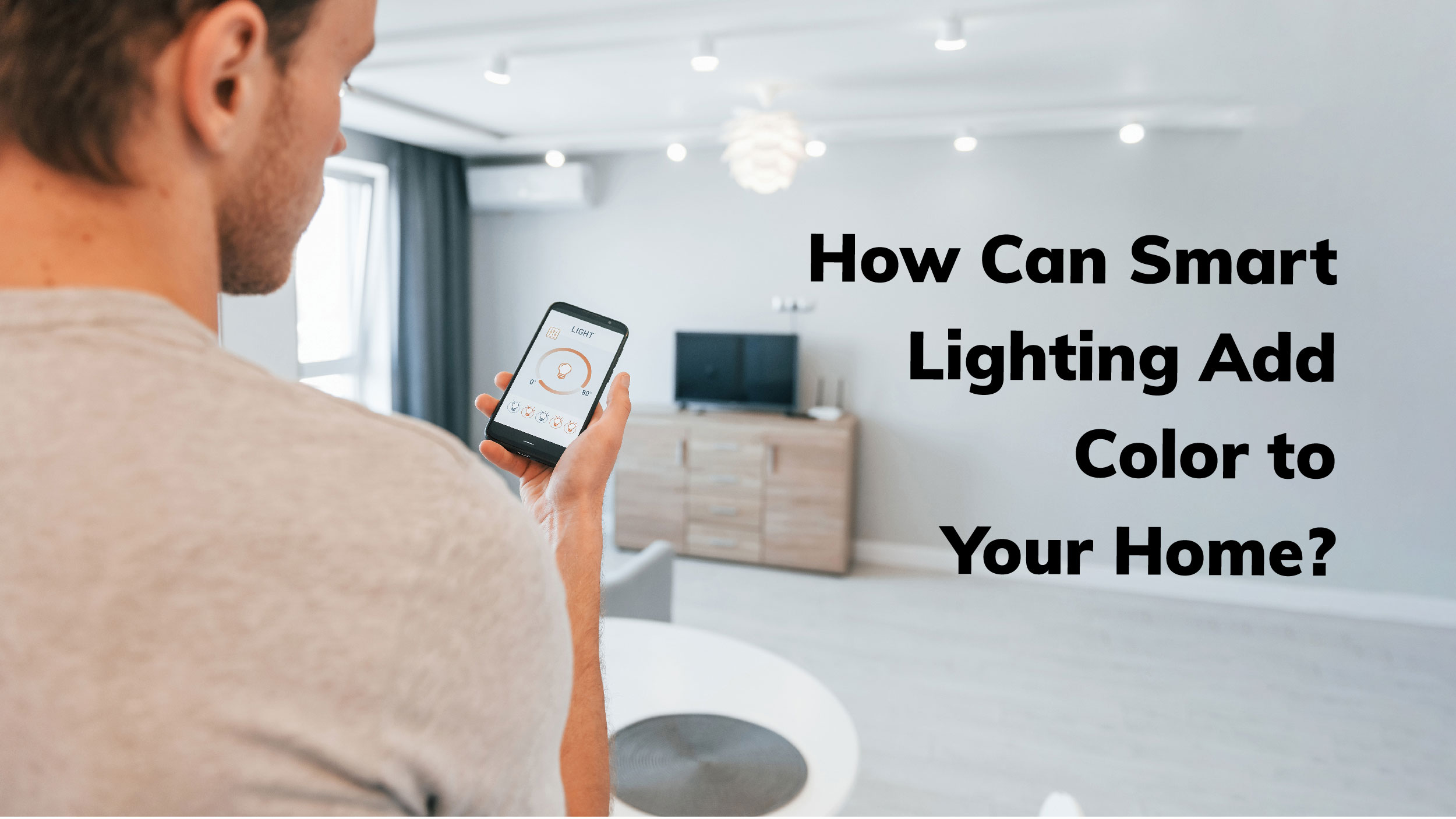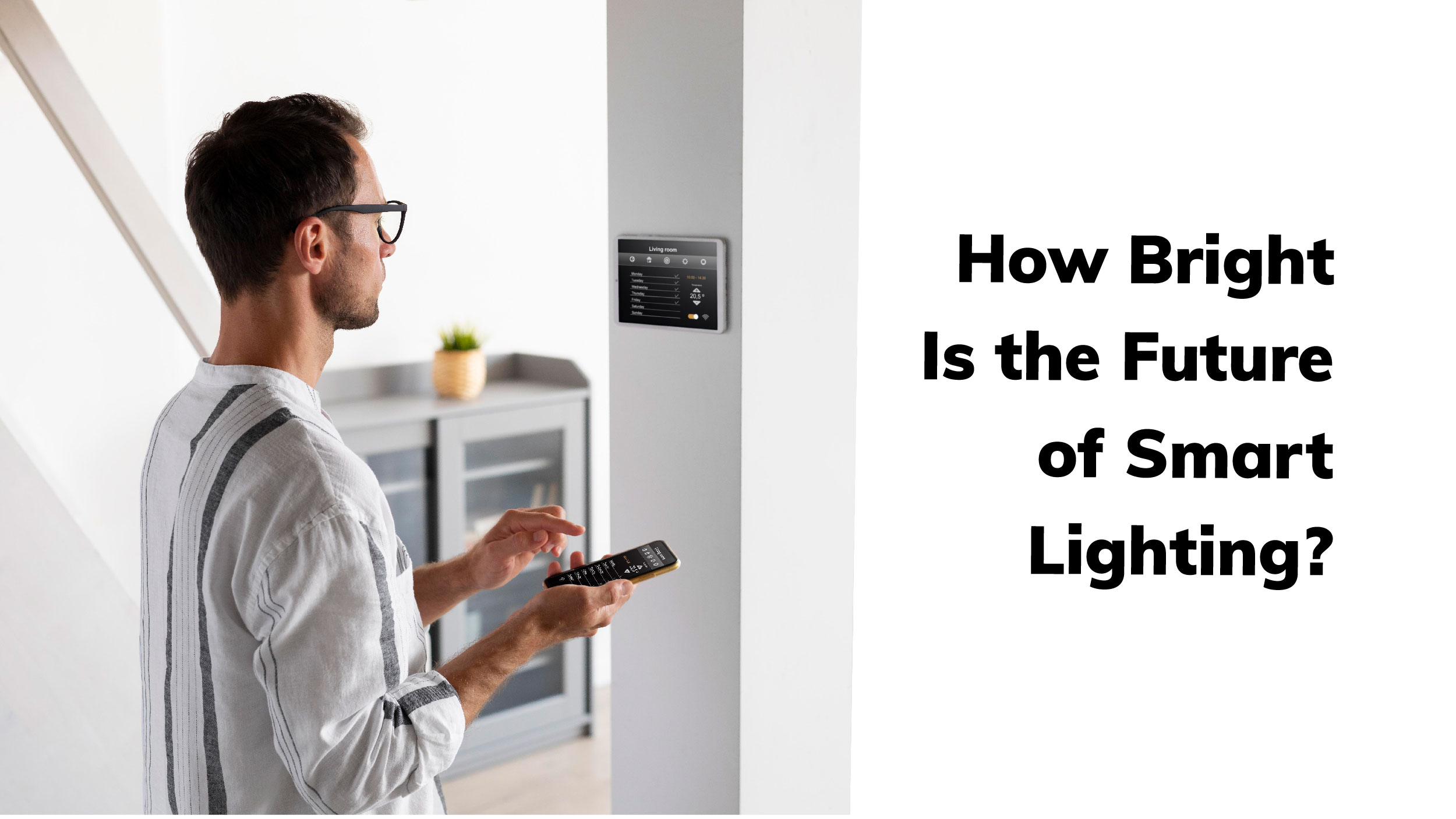The light bulb was the superstar of the 19th century, making lives brighter and our homes happier! Fast-forward to the 21st century, and voila! We have evolved into a world of dazzling designs and mind-boggling technologies that not even traditional bulbs could have imagined! Just when you thought it couldn’t get any better, here comes the cool kid on the block—the smart lights! But what’s the deal with this fancy term? Let’s shed some “smart” light on it, shall we?
What is Smart Lighting?
Smart Lighting is an innovative approach to lighting your house (not on fire!). The software in smart LED bulbs allows you to control them remotely or automate your lights, eliminating the need for conventional wall switches and connecting to an application, smart home assistant, or another smart accessory.
On the other hand, traditional light bulbs need to be turned on and off with the help of a switch. It may occasionally be hooked into a dimmer switch, allowing you to adjust the lights’ brightness or dimmers. The functionality of conventional home lighting, however, is typically limited to these attributes. While smart lighting is a whole lot more than that.
In a nutshell, smart lighting allows you to:
- Control your home’s lighting remotely from anywhere
- Take advantage of having more control over your home’s lighting moods
- Schedule your automated lighting according to your lifestyle – no dimmers necessary
Sounds interesting, doesn’t it? Well, it doesn’t end here.
How Can Smart Lighting Add Color to Your Home?

Smart lighting brings convenience and controls right to your fingertips. With wireless and smartphone app capabilities, you can manage your lights from a distance. Set timers, create schedules, and establish routines to automate turning your lights on and off at specific times or in response to events. Group lights across circuits, dim or change colors, and even have them react to motion and occupancy. You can even let your lights sync with the natural rhythm of the day, following the sunrise and sunset.
It doesn’t always have to be the boring ‘enter a room and reach for the switch’. Smart lighting enables you to have fun using voice commands, programmable wireless buttons, or remote controls to customize your lighting experience. Sounds a little like Hogwarts, doesn’t it?
Advantages of Smart Lighting
Given below are some interesting benefits of smart lighting:
- Security and safety – Turn lights on at random while you’re away to stave off burglars, and never again return home to a dark house. Activate outdoor lights without any wiring at night using motion sensors.
- Convenience – If you frequently fall asleep with the bedroom light on, the smart lighting system will automatically turn it off for you. Additionally, the system allows you to easily turn off all lights at night with a simple command or schedule, and it can automatically turn them back on in the morning. This ensures that you have a convenient and efficient way of managing your lighting preferences without worrying about leaving lights on when not needed. When you enter a room, motion sensors automatically turn on the lights and when you leave, they turn the lights off.
- Health & wellbeing – Waking up to a gradually growing light is less startling than an alarm. It is found that syncing the lights with respect to sunlight helps you feel more energized and allows you to wind down when it’s time. Color-changing lights are amazing for celebrations and events, but they can also act as a warning. For instance, Philips Hue lights can be programmed to turn blue when it’s pouring outside or red when you’ve just received an email from your boss.
How Green is Smart Lighting?
In the long run, smart lighting is designed to bring more than just aesthetic advantages to your house. It can increase your energy efficiency, lowering both your carbon footprint and energy costs.
At some point, we’ve all forgotten to turn off lights around the house, no matter how hard we try to remember. In a hurry or while you’re preoccupied, it’s simple to forget to turn off the light when you leave a room. This is no longer an issue due to the installation of smart lights. Discreet motion sensors turn off the lights when a room is empty and detect when a room is unoccupied.
How does this happen? Well, the most recent LEDs are used in smart lighting. Energy.gov states that compared to conventional incandescent bulbs, these substitutes consume between 25 and 80% less energy. They also have a three- to twenty-five-fold longer lifespan, which results in long-term cost savings for you.
How Bright Is the Future of Smart Lighting?

Suppose you had scheduled this morning’s activities on your smartphone.
When your alarm goes off (or you want to snooze it), you do so with a sluggish voice command. A few minutes later, the shades roll up or the lights gradually turn on to get you out of bed.
As you stumble about the house getting ready, the lights start to come up in each room, barely catching your attention. Just as you enter the kitchen, the toast pops and the coffee maker is done brewing.
As you finish your breakfast a few minutes later than usual, a kind voice reminds you that it’s time to leave just before you’re about to hit the traffic. As your front door closes behind you automatically, your automobile starts, and the house lights gradually dim until they turn off completely as you leave.
Imagine a city with this technology where streetlights turn on when cars are nearby. A town where the headlights of the automobiles themselves are automatically adjusted to match the weather outdoors and the traffic lights sync precisely with the approaching vehicles.
Makes you wonder if you are in a much-too-futuristic movie, doesn’t it?
Technology is, in fact, working towards making this scenario a reality, creating a massive network of interconnectedness that will make our lives easier and more convenient. Smart lighting is a modest step in that direction and a prototype of this future that is currently available for use.
The Internet of Things (IoT), a network of internet-connected “smart” devices, includes smart lighting as one of its components.
Turning off!
The highly inventive and quickly evolving field of “smart lighting” has the potential to completely transform conventional lighting systems. With smart lights, users may adjust the lighting, save energy, and enhance the ease and comfort of their living environments.
Smart lighting provides several advantages, such as simplicity of use, adaptability of scheduling, and remote control via smartphones or other smart home automation devices. Additionally, it is a preferred option for environmentally conscious individuals and businesses because of the rising demand for energy efficiency. Smart lighting is projected to become much more widely used and less expensive as technology develops, making it a crucial part of our future smart homes and communities. No more fighting over whose turn it is to turn the lights off!




